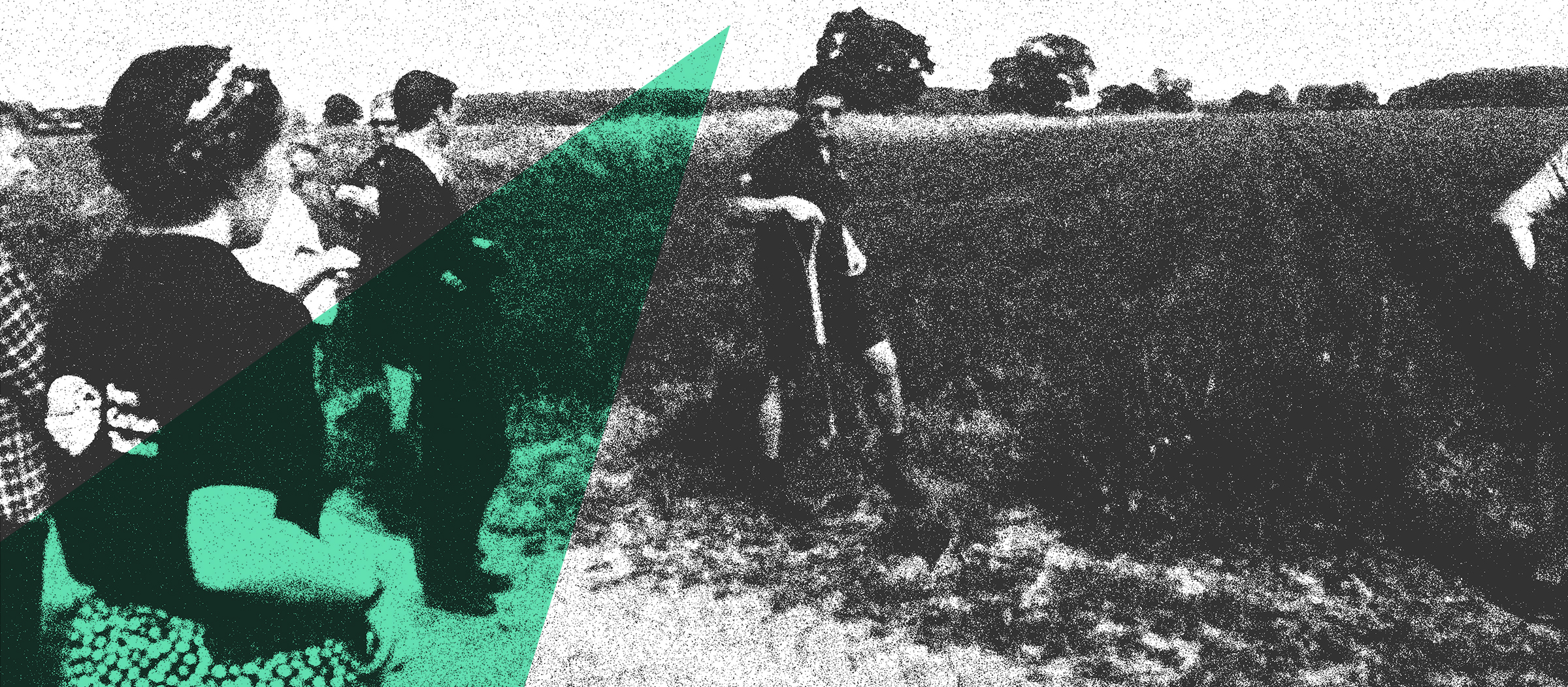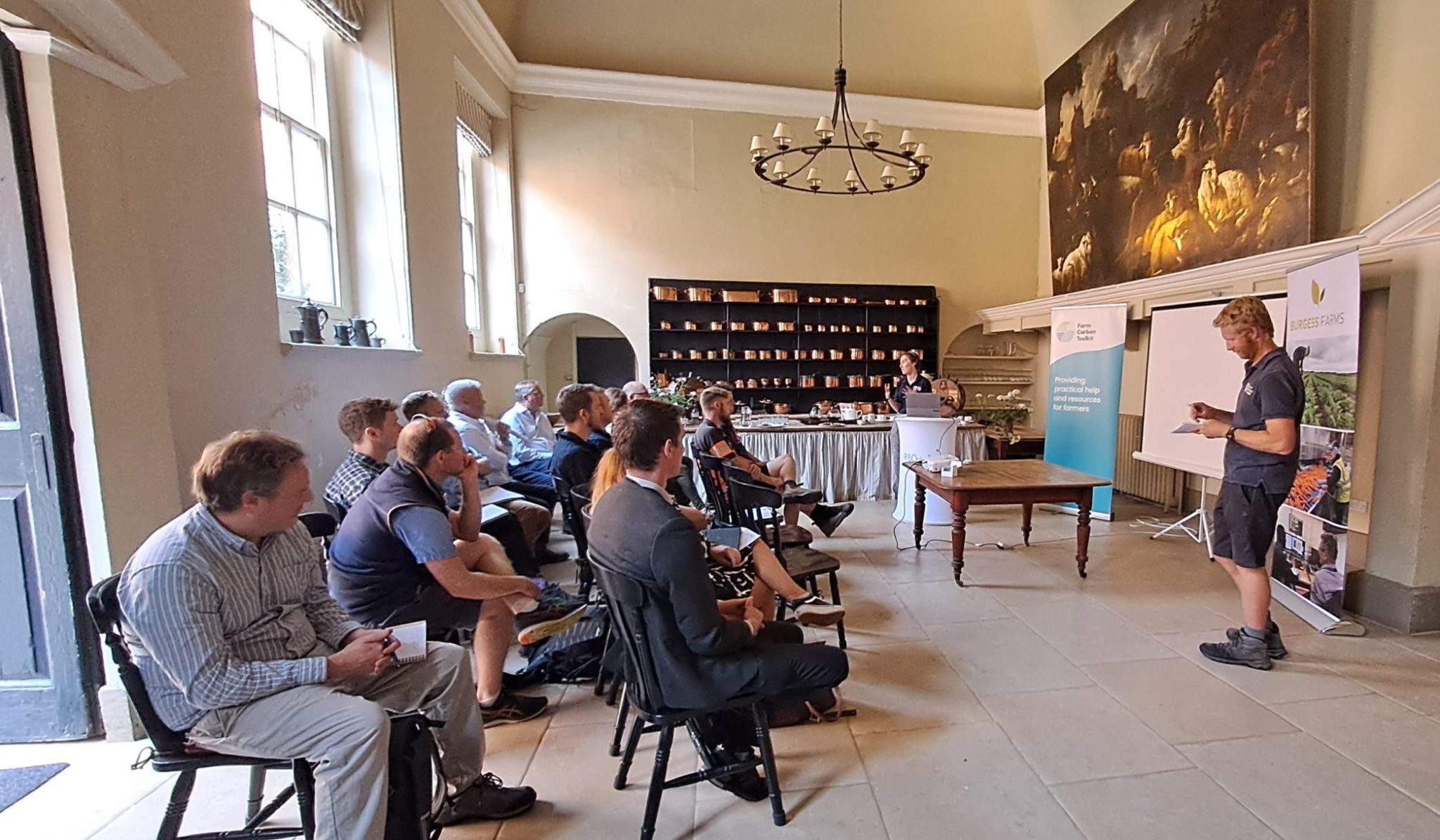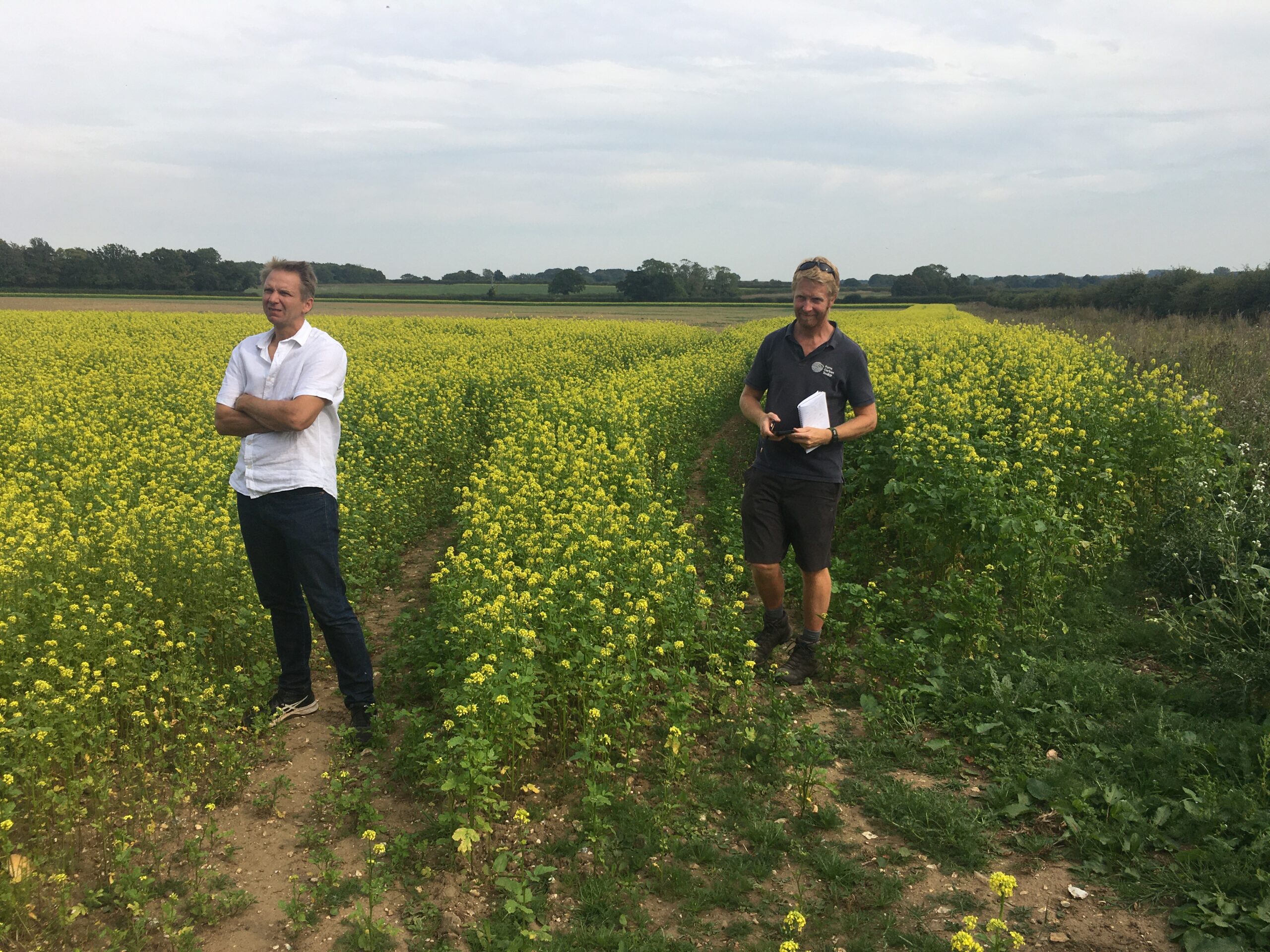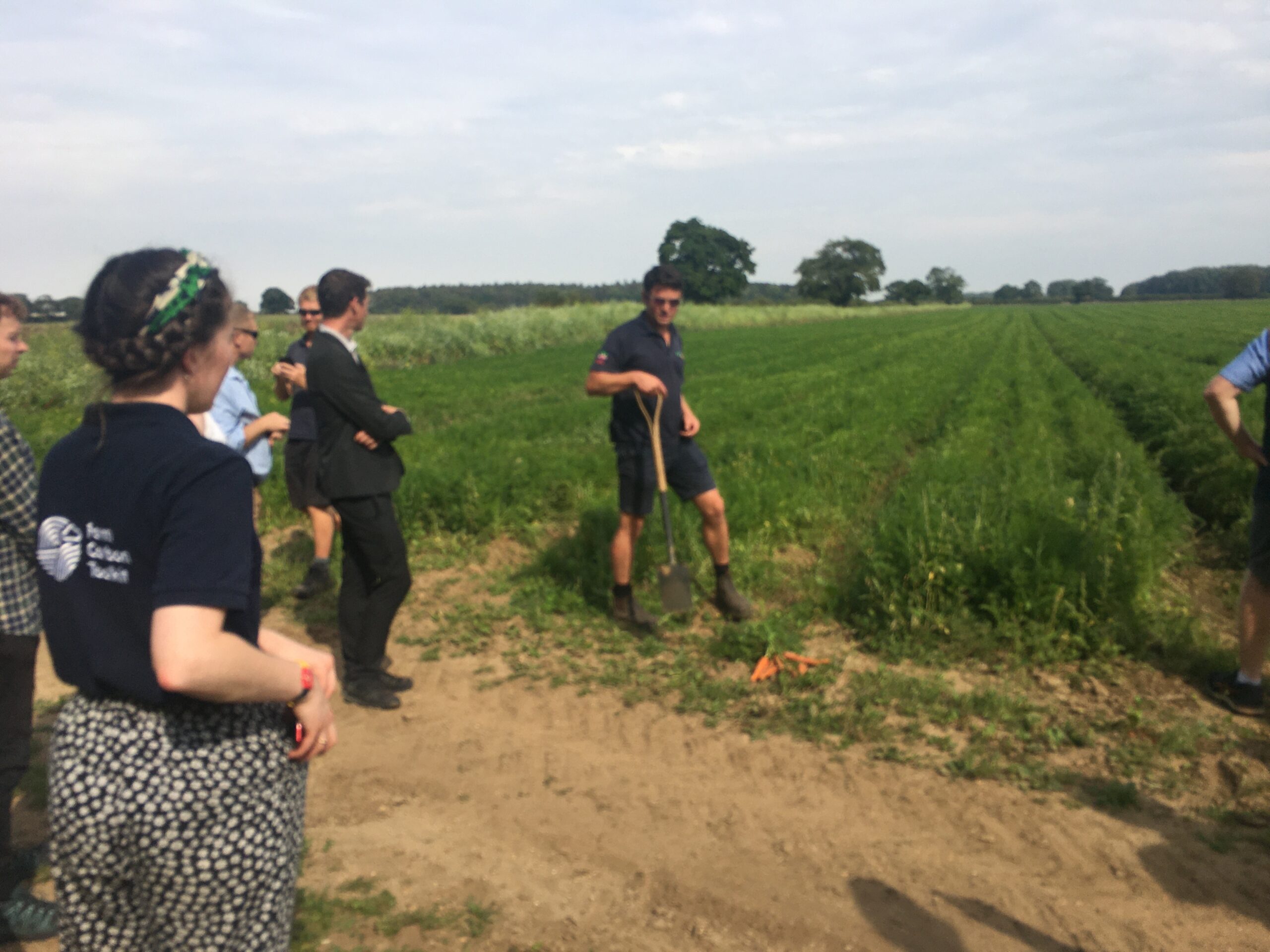
Houghton Hall Trip Report
Alan and Ben attended an event in Houghton Hall, Norfolk, to mark the “official” launch of the new version of the Farm Carbon Calculator, co-funded by Tesco and WWF. Creative Coop won the contract for this work back in December 2022, and it’s been an adventure! So it felt fitting to finish the adventure at such an amazing location (although, in reality, this is not the end of the adventure, and there are many future plans for the calculator).
I’m not sure what I was expecting, but I realized this wasn’t it when our approach to the event venue brought us through an orchard whose centrepiece was a ten-foot-tall sundial. Houghton Hall, it turns out, is a huge estate on 4,000 acres of land, and we were lucky enough to be spending the day in one of the buildings next to the main house, listening to talks given below two impressively large oil paintings on an agricultural theme.
The chain of connections that led to us being there was that we developed the Farm Carbon Calculator for Farm Carbon Toolkit, one of whose clients is RB Organic, who are a supplier of produce to many outlets including Tesco, and who rent fields on the Houghton estate.
The event itself was fascinating – all of the speakers were extremely knowledgeable and all of the questions led to interesting discussions about the current and future state of carbon accounting and agritech. Melissa from RB Organic went first, and gave a very illuminating description of their journey from “carbon newbies” in 2019, to first mapping their carbon footprint with the help of FCT, to beginning active measures to reduce their carbon emissions, and tracking their progress all the way through using the Farm Carbon Calculator. As one of the developers of the calculator, I found it very interesting to hear the point of view of a farming professional who has been using it.
Next, Lizzy from FCT gave a talk on the calculator itself, with the main focus being the recent changes that have been funded by Tesco / WWF. These include multi-region emissions (UK and Italy to start with); sending a product footprint to upstream supply chain entities (so that small farms can send product emissions reports to larger suppliers, who can, in turn, send this along to retailers, for example); carbon balance comparisons between farms or years; and easy export of farm and report data.

Many questions revolved around the unsolved issues around “scope 3” emissions – essentially, carbon emissions from other entities that are passed along the supply chain, how these can be reliably tracked without double accounting, and who should ultimately be responsible for them. Also, many farmers wanted to know when all of this optional reporting and voluntary targets would start to become mandatory, either for supplying large retailers or even by government regulation. None of these questions can be answered yet but the discussions made me realize how much is riding on the work that is being done in this area. Livelihoods and the future of a whole industry are at stake, and the research is still being done, to say nothing of the software that is being built to hit a moving target.

It’s clear that whatever work is being done and money is being spent in this area right now (and it’s significant), it’s nothing compared to the work that will be done and the money that will flow into it when the data and science are more settled and the regulation and consumer paradigms become clear. Early movers and adopters will have an advantage but everyone else is going to catch up very quickly.
After lunch, we were brought on a “farm walk” – which, as it turned out, involved being driven on a tour around the estate in a trailer hitched to the back of a tractor. To be clear, this was amazing. We went past woodland and tilled fields, holiday cottages on fishing lakes, enormous stretches of landscaped lawns and trees, stables and sculptures, and apparently endless hedgerows full of blackberries that I couldn’t quite reach. We stopped at 3 different fields in use by RB Organic – 2 of them full of carrots, and one an experiment in alternative preparation.
Agritech is in a state of flux; after World War Two there was what is called the “green revolution” where scientific food production techniques were taken to the next level, with the focus for many decades being almost entirely on yield – more food per hectare, more food per tonne of product, more more more! Things are now changing; limits to growth are being tested, and knowledge of environmental destruction is far more widespread, so agritech is shifting towards a more nuanced and complex understanding of how to continue to produce food at the levels we need while reducing the industrial impact and pulling back from the brink of ecosystem destruction and soil degradation as well as a myriad of other potential dangers. One of the things I found interesting is that many of the more modern techniques that were being explained to us on our journey around the fields in the Houghton estate were in fact “old” farming techniques. Instead of using weed-killing products or manual weeding, grow mustard plants in a field before planting the food crop. Allow the field margins to grow wild to promote beneficial insects and sequester carbon. These techniques sit alongside other completely modern approaches such as “vertical farming”.

The role of carbon in climate change may or may not be a settled question, but I began to understand over the course of this day that in this case, carbon is not being used as a single, simplistic metric. None of the speakers, and none of the highly engaged questioners in the audience, thought that carbon was the only thing that mattered when it comes to sustainable food production. Lizzy spoke about a complex, nuanced picture involving carbon, nitrogen, phosphorus, biodiversity, and many other metrics; many questions converged on the idea that in future there will be a form of consumer labelling tracking these and allowing the public to make much more informed decisions about their purchases. Carbon seems to be a highly useful proxy for the entire industrial picture of an agricultural business: where money is spent, carbon is emitted. Where carbon is reduced, other metrics become more balanced. By tracking and understanding carbon, the entire food supply chain starts to become transparent, making other forms of sustainable practice possible on a large scale. Carbon accounting looks like it will be a form of accounting on the same level of importance as financial, allowing a multidimensional understanding of businesses.
We all want to protect our environment. We also all want everyone to have enough to eat. I think almost everyone would find a way to agree with both of these statements. Somehow we have to find a way to answer these two needs, and it’s very interesting and gratifying to have a chance to work in this area, where so much is changing and so much appears possible.

